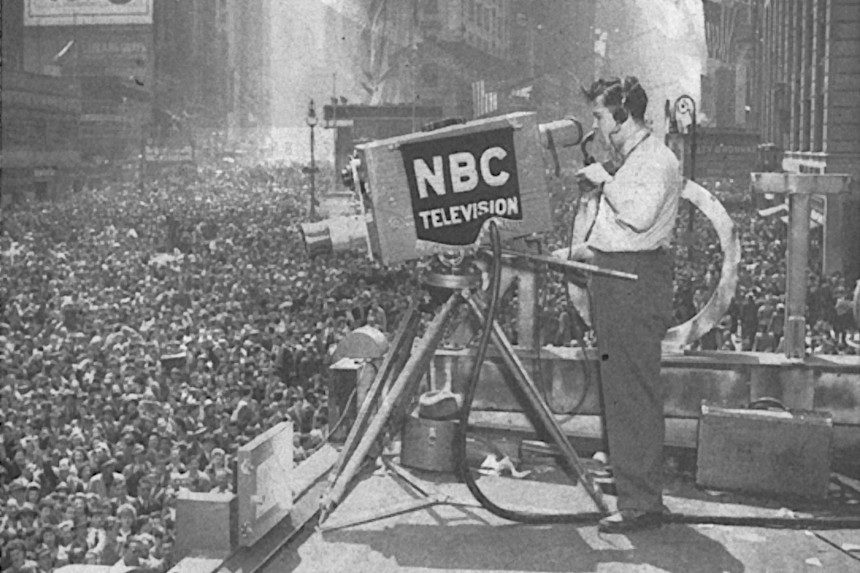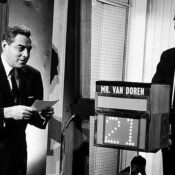Throughout the three parts of Alva Johnston’s 1946 Television: Boom or Bubble? series in the Post, the writer ponders whether the increased interest in TV is going to last or whether bubble is going to burst. By the third part, Johnston’s concerns run from quaint to hilarious, as any manner of problems are suggested; these run from clothes disappearing on screen because of bad lighting (honestly, not a thing that happened a lot) to actors struggling with the format (TV was mostly live then). Perhaps the funniest notion comes near the end, when it’s suggested that viewers prefer their announcers or on-air journalists to have beards (though it’s frankly even funnier to consider that people once read book reviews on TV).
The answer to “boom or bubble” became quite plain in the 1950s. In 1948, close to 175,000 TV sets were sold; in 1950, Americans purchased five million sets. By the end of the decade, TV was in 90 percent of American homes. Program options had expanded as TV became the norm. Some networks had already gone coast-to-coast by 1951, and the slow roll-out of color was underway (the first prime series to go full-color on a network was NBC’s The Marriage, starring Hume Cronyn and Jessica Tandy, in 1954), putting to rest some of Johnston’s concerns about the quality of visuals.
Television has proven to be an incredibly flexible medium. It’s adapted to and absorbed cable, premium channels, satellite broadcasting, and pay-per-view. It made the advent of VCRs and DVRs work to its advantage; viewers could literally share a show with a friend to get them interested. As mobile and streaming technologies have grown by leaps and bounds, anybody can carry a version of their favorite TV programming with them in their pocket and catch a show at any time. Johnston would be amazed to see what it’s become (even if he wasn’t quite right about the beards).

Featured image: ©NBC/Universal
Become a Saturday Evening Post member and enjoy unlimited access. Subscribe now



